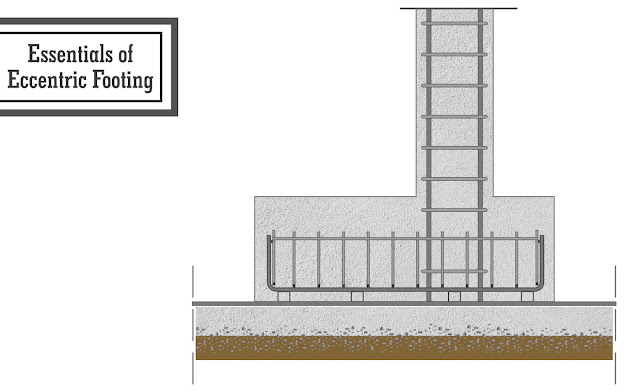Understanding the Benefits and Uses of Eccentric Footings in Construction
Eccentric footing is a type of foundation that is used to support heavy structures, such as buildings or bridges, by transferring their weight to the soil below. Unlike a traditional footing, which distributes the load evenly, an eccentric footing is designed to be off-center, allowing for greater flexibility in construction.
In this article, we will explore what eccentric footing is, its benefits and uses in construction, and the various types of eccentric footing.
What Is Eccentric Footing?
Eccentric footing is a type of foundation that is designed to support structures with uneven weight distributions or loads. It is called "eccentric" because the center of gravity of the footing does not align with the center of the column or wall it supports. This is intentional and allows for greater flexibility in construction.
An eccentric footing is designed to transfer the load of the structure to the soil below. However, because the load is not evenly distributed, it creates a bending moment in the footing. This bending moment must be taken into account during the design process to ensure that the footing can support the weight of the structure without failing.
Benefits and Uses of Eccentric Footings
Eccentric footings offer several benefits over traditional footings, including:
Greater flexibility in construction: Eccentric footings allow for greater flexibility in the construction of buildings and other structures. They can be used to support structures with uneven weight distributions, such as columns, walls, or arches.
Reduced excavation and construction costs: Because eccentric footings can be designed to support structures with uneven weight distributions, they can reduce the need for costly excavation and construction work.
Increased stability and safety: Eccentric footings can provide increased stability and safety for structures that are subject to heavy loads or lateral forces, such as earthquakes or wind.
Improved load distribution: Eccentric footings can improve load distribution and reduce the risk of settlement or subsidence of the structure.
Eccentric footings are commonly used in the construction of high-rise buildings, bridges, and other large structures. They are particularly useful when the weight of the structure is not evenly distributed, such as when columns or walls are located off-center.
Types of Eccentric Footings
There are several types of eccentric footings, each of which is designed to meet specific construction needs. Some of the most common types include:
Strap footing: A strap footing is a type of eccentric footing that is used to support two columns or walls that are parallel to each other. It consists of a long strip of reinforced concrete that spans the distance between the two columns or walls.
Combined footing: A combined footing is a type of eccentric footing that is used to support two or more columns or walls that are close to each other. It consists of a single rectangular or trapezoidal footing that supports all of the columns or walls.
Raft footing: A raft footing is a type of eccentric footing that is used to support a large structure, such as a high-rise building or bridge. It consists of a large, flat slab of reinforced concrete that spreads the load of the structure over a large area.
Stepped footing: A stepped footing is a type of eccentric footing that is used when the soil is weak or the load is very heavy. It consists of a series of stepped concrete blocks that are designed to spread the load of the structure over a larger area.
In conclusion, eccentric footing is an essential part of construction, particularly for large structures with uneven weight distributions or loads. By allowing for greater flexibility in construction, reducing excavation and construction costs, and improving stability and safety, eccentric footings have become a popular choice in modern construction projects. The various types of eccentric footings, such as strap footing, combined footing, raft footing, and stepped footing, provide designers and engineers with a range of options for meeting specific construction needs.
When designing and constructing a building or other structure, it is essential to consider the weight distribution and loads that it will need to support. An eccentric footing can be an effective solution for distributing weight in a way that prevents settling and subsidence, providing a stable foundation for the structure.
Additionally, eccentric footings are beneficial in seismic areas where earthquakes can cause significant damage to a building's foundation. An eccentric footing can resist lateral forces and minimize structural damage, providing greater safety and durability.
In summary, eccentric footings play a critical role in modern construction by providing greater flexibility, stability, and safety for buildings and other large structures. They offer several benefits over traditional footings, including reduced excavation and construction costs, improved load distribution, and increased safety and stability. The various types of eccentric footings provide designers and engineers with a range of options for meeting specific construction needs. By using eccentric footings, construction professionals can create structures that are not only functional but also safe and durable.




Comments
Post a Comment